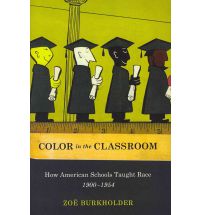
Strong Support, Low Awareness: Public Perception of the Common Core Standards
I love the CCSS! Now, what are they, again?

I love the CCSS! Now, what are they, again?











While adoption and implementation of the Common Core State Standards (CCSS) have spurred a hailstorm of activity across educator and edu-wonk circles alike, the general public remains clueless even as to what the standards are—never mind how they are being implemented or what the long-term implications of their adoption might be. Through this national poll (given to 800 registered voters), the folks at Achieve find that a whopping 60 percent of Americans have never heard of the Common Core standards—and another 21 percent have heard “not much.” Further, among voters who have heard peep about the Common Core, impressions are mixed: Thirty-seven percent view them favorably while 34 percent hold an unfavorable opinion (the rest are undecided). Despite this mixed reaction to the CCSS specifically, Americans overwhelmingly approve of the idea of common academic standards for all states: sixty-six percent support vs. 31 percent opposed. (Even a majority of Republicans like the notion of common standards.) But with so few people in the know, it’s clear that Common Core remains fragile politically. The good news, however, is that public-school teachers (most of whom have heard “a lot” about the Common Core) like the idea of common standards: Sixty-five percent of them are in support. That’s a promising indication that these standards might actually have some staying power in the classroom—if the public doesn’t come to dislike them first.
Achieve, Inc. “Strong Support, Low Awareness: Public Perception of the Common Core State Standards” (Achieve, Inc., October 2011).

Would-be elementary teachers deciding whether to enroll in the education school at Antioch University or the University of Puget Sound: Go with the latter. According to this new report by Dan Goldhaber and Stephanie Liddle, Puget Sound graduates are much more effective at boosting their students’ achievement levels than Antioch. For this analysis, Goldhaber and Liddle tapped a database of roughly 8,700 elementary teachers in Washington State and linked them to about 293,000 students for whom value-added data could be garnered. They found significant differences between individual in-state Washington teacher-training programs: In reading, the average difference in student performance between teachers from the most- and least-effective programs is equivalent to that seen in students without learning disabilities and those with. Hiring an alum from a program in the 84th percentile versus the mean is as effective at upping student test scores as reducing class size by five to ten students. (Surely, some of these differences can be attributed to selectivity of school. But Goldhaber and Liddle found this not to be the overwhelming factor.) However, the authors also found little or no difference between teachers that were trained inside or outside the state of Washington. The authors jump through a long-course of statistical hoops when formulating these analyses—and these mixed results leave more questions than they answer. The biggest might just be: The Data Quality Campaign reports that thirty-five states have enough available data to conduct this same type of research—why haven’t more studies of this ilk been conducted?
| Click to listen to commentary on Goldhaber's and Liddle's report from the Education Gadfly Show podcast |
Dan Goldhaber and Stephanie Liddle, “The Gateway to the Profession: Assessing Teacher Preparation Programs Based on Student Achievement,” (Bothell, WA: University of Washington Center for Education Data & Research, 2011).

Rigorous school-voucher studies abound, with most research measuring the achievement effects of vouchers for students who use them. This study by CATO’s Matthew Carr—the first of its kind to investigate Ohio’s EdChoice Scholarship program—takes a different tack. It examines whether traditional public schools are spurred to improve in the face of a threat of losing students to private schools—if competition itself “creates incentives for systemic improvements.” To test this, Carr analyzed fourth- and sixth-grade reading and math achievement data on low-performing EdChoice-eligible schools over three academic years (2005-06, 2006-07, and 2007-08). The results were mixed. While fourth-grade math and sixth-grade math and reading scores remained the same, Carr found the voucher threat correlated with significant achievement gains in fourth-grade reading (the equivalent of 2,200 extra students reaching proficiency). What’s most significant about this finding is that Carr’s analysis controls for (among other things) the “scarlet letter” effect—i.e., did schools improve not because of the voucher threat but rather because of the stigma associated with receiving a highly publicized poor rating from the state? (For the stat-heads in the bunch, Carr’s methods are worth a scan.) Further, while fourth-grade reading gains were significant, they didn’t come from the “bubble kids”—those just below the proficiency cut-off; rather, students in the lowest and highest performing categories made gains. Though its findings don’t constitute a grand slam for voucher proponents, the report is welcome—especially as EdChoice adds another 15,000 students to its eligible roster.
Matthew Carr, “The Impact of Ohio’s EdChoice on Traditional Public School Performance." CATO Journal Spring/Summer 2011.

 Zoë Burkholder (a recent Fordham/AEI “Emerging
Education Policy Scholar”) expounds in this book on a little-remembered, but still-felt
initiative of teachers to change the racial discourse in America. Prior to
WWII, Burkholder explains, racism was nation-based, often between various European
ethnic groups. Non-whites were largely invisible within society. During the war,
teachers—who started championing the ideal of tolerance—changed America’s concept
of race from nationality to color, in order to gain acknowledgment of
non-whites in society. Then after the war, teachers promoted a “color-blind”
society in which individuals were valued and identified for their talents and
cultural diversity instead of the color of their skin, shifting the conception
of race again, this time from color to culture. The book’s anecdotes and
explanations are valuable for their context; the book a smart window into
consequences of social molding through schooling.
Zoë Burkholder (a recent Fordham/AEI “Emerging
Education Policy Scholar”) expounds in this book on a little-remembered, but still-felt
initiative of teachers to change the racial discourse in America. Prior to
WWII, Burkholder explains, racism was nation-based, often between various European
ethnic groups. Non-whites were largely invisible within society. During the war,
teachers—who started championing the ideal of tolerance—changed America’s concept
of race from nationality to color, in order to gain acknowledgment of
non-whites in society. Then after the war, teachers promoted a “color-blind”
society in which individuals were valued and identified for their talents and
cultural diversity instead of the color of their skin, shifting the conception
of race again, this time from color to culture. The book’s anecdotes and
explanations are valuable for their context; the book a smart window into
consequences of social molding through schooling.
|
Zoë Burkholder. Color in the Classroom: How American Schools Taught Race 1900-1954, (Oxford University Press, New York, NY, 2011). |


We finally have a serious, thoughtful ESEA reauthorization proposal in the Senate, one that should gain support from both sides of the aisle and both ends of Pennsylvania Avenue. But here’s a warning: It’s not the bill that the Senate is currently marking up.

Like the guy in green, the Alexander-Burr proposal
is just plain stronger. (Photo by Hector Alejandro)
No, that bill, authored by education-committee chairman Tom Harkin and ranking member Mike Enzi, is a hodgepodge of half-baked ideas that should alarm folks on the right and the left.
And sure enough, progressives have already made their opinions clear on why the bill should be stopped dead in its tracks. But it should offend conservatives (including the Reform Realists among us) too, though for very different reasons. Such conservatives should back the aforementioned proposal put forward by Senators Alexander, Burr, and others, instead.
Here are the Harkin-Enzi bill’s major offenses:
Leading Republicans, including ranking member Enzi and Senator Lamar Alexander, have already signaled that they will vote to get the bill out of committee but can’t support “sending it to the president” in its current form. Here’s hoping that somewhere along the road to 1600 Pennsylvania Avenue (House of Representatives, we’re looking at you!), these onerous provisions fall by the wayside.
Otherwise, Republicans would be wise to scrap the bill and start over—with Senator Alexander’s proposal as the jumping-off point. It’s a much stronger bill, closer in many ways to the Administration’s own Blueprint, and much more serious about re-calibrating the federal role in education. And if Democrats won’t go for that—well, wait for a more favorable environment in 2013.
This piece originally appeared (in a slightly different form) on Fordham’s Flypaper blog. Subscribe to Flypaper here.
| Click to listen to commentary on the Harkin-Enzi proposal from the Education Gadfly Show podcast |


This is the dawning of the Age of Austerity.
(Photo by Dottie Mae)
Since his election as Chicago mayor, Rahm Emanuel has pushed hard on several education-policy fronts—including lengthening the city’s inexcusably short school day and expanding all-day kindergarten access. It’s not just what he’s fighting for that’s exciting (though lengthening the school day is long overdue). Nor is it whom he is fighting against (though it does always tickle Gadfly when Democrats buck the unions). What makes Rahm so promising is the refreshingly pragmatic manner in which he is waging these battles. Noting that “the cost of putting political choices ahead of practical solutions has become too expensive,” Emanuel has exerted concerted campaigns to deflate bloated departments and reroute the recouped dollars to targeted initiatives. To pay for that all-day kindergarten, for example, he lopped $400 million off the city’s schools’ bureaucracy. Best of all is his refreshing rhetoric. About the 2003 teacher-union contract (signed by Arne Duncan, by the way), he said: “Chicago teachers got a double-digit pay raise and a shortened school week. The result was that politicians did not get a teachers’ strike and teachers did get better pay. But can anyone tell me what the kids got? We are going to design a system where the kids get something.” Yes, yes, yes!
|
“A Progressive in the Age of Austerity,” by Thomas L. Friedman, New York Times, October 15, 2011. |


Monopoly meets the real world.
(Photo by Mike Fleming)
Public-school systems are notoriously insensitive to parental demands. When they do offer popular programs that parents want, they are often oversubscribed—and yet officials almost never take the obvious next step and expand or replicate the offering. Not so in St. Louis. In response to swollen market demand for its standout magnet school, Kennard Classical Junior High, the district has created a second magnet school—by transforming an undersubscribed school slated for closure. Mallinckrot Academy—and its gifted-education program—are meant “to capitalize on the demand for accelerated learning that Kennard alone cannot satisfy.” These programs, which are largely geared toward middle-class families, are designed to keep these folks (and their tax-base dollars) within city limits. Which, in Gadfly’s view, is a worthy goal. Other struggling urban districts would be wise to follow suit.
|
“St. Louis magnet school program breeding success,” by Jessica Bock, St. Louis Today, October 12, 2011. |


While adoption and implementation of the Common Core State Standards (CCSS) have spurred a hailstorm of activity across educator and edu-wonk circles alike, the general public remains clueless even as to what the standards are—never mind how they are being implemented or what the long-term implications of their adoption might be. Through this national poll (given to 800 registered voters), the folks at Achieve find that a whopping 60 percent of Americans have never heard of the Common Core standards—and another 21 percent have heard “not much.” Further, among voters who have heard peep about the Common Core, impressions are mixed: Thirty-seven percent view them favorably while 34 percent hold an unfavorable opinion (the rest are undecided). Despite this mixed reaction to the CCSS specifically, Americans overwhelmingly approve of the idea of common academic standards for all states: sixty-six percent support vs. 31 percent opposed. (Even a majority of Republicans like the notion of common standards.) But with so few people in the know, it’s clear that Common Core remains fragile politically. The good news, however, is that public-school teachers (most of whom have heard “a lot” about the Common Core) like the idea of common standards: Sixty-five percent of them are in support. That’s a promising indication that these standards might actually have some staying power in the classroom—if the public doesn’t come to dislike them first.
Achieve, Inc. “Strong Support, Low Awareness: Public Perception of the Common Core State Standards” (Achieve, Inc., October 2011).

Would-be elementary teachers deciding whether to enroll in the education school at Antioch University or the University of Puget Sound: Go with the latter. According to this new report by Dan Goldhaber and Stephanie Liddle, Puget Sound graduates are much more effective at boosting their students’ achievement levels than Antioch. For this analysis, Goldhaber and Liddle tapped a database of roughly 8,700 elementary teachers in Washington State and linked them to about 293,000 students for whom value-added data could be garnered. They found significant differences between individual in-state Washington teacher-training programs: In reading, the average difference in student performance between teachers from the most- and least-effective programs is equivalent to that seen in students without learning disabilities and those with. Hiring an alum from a program in the 84th percentile versus the mean is as effective at upping student test scores as reducing class size by five to ten students. (Surely, some of these differences can be attributed to selectivity of school. But Goldhaber and Liddle found this not to be the overwhelming factor.) However, the authors also found little or no difference between teachers that were trained inside or outside the state of Washington. The authors jump through a long-course of statistical hoops when formulating these analyses—and these mixed results leave more questions than they answer. The biggest might just be: The Data Quality Campaign reports that thirty-five states have enough available data to conduct this same type of research—why haven’t more studies of this ilk been conducted?
| Click to listen to commentary on Goldhaber's and Liddle's report from the Education Gadfly Show podcast |
Dan Goldhaber and Stephanie Liddle, “The Gateway to the Profession: Assessing Teacher Preparation Programs Based on Student Achievement,” (Bothell, WA: University of Washington Center for Education Data & Research, 2011).

Rigorous school-voucher studies abound, with most research measuring the achievement effects of vouchers for students who use them. This study by CATO’s Matthew Carr—the first of its kind to investigate Ohio’s EdChoice Scholarship program—takes a different tack. It examines whether traditional public schools are spurred to improve in the face of a threat of losing students to private schools—if competition itself “creates incentives for systemic improvements.” To test this, Carr analyzed fourth- and sixth-grade reading and math achievement data on low-performing EdChoice-eligible schools over three academic years (2005-06, 2006-07, and 2007-08). The results were mixed. While fourth-grade math and sixth-grade math and reading scores remained the same, Carr found the voucher threat correlated with significant achievement gains in fourth-grade reading (the equivalent of 2,200 extra students reaching proficiency). What’s most significant about this finding is that Carr’s analysis controls for (among other things) the “scarlet letter” effect—i.e., did schools improve not because of the voucher threat but rather because of the stigma associated with receiving a highly publicized poor rating from the state? (For the stat-heads in the bunch, Carr’s methods are worth a scan.) Further, while fourth-grade reading gains were significant, they didn’t come from the “bubble kids”—those just below the proficiency cut-off; rather, students in the lowest and highest performing categories made gains. Though its findings don’t constitute a grand slam for voucher proponents, the report is welcome—especially as EdChoice adds another 15,000 students to its eligible roster.
Matthew Carr, “The Impact of Ohio’s EdChoice on Traditional Public School Performance." CATO Journal Spring/Summer 2011.

 Zoë Burkholder (a recent Fordham/AEI “Emerging
Education Policy Scholar”) expounds in this book on a little-remembered, but still-felt
initiative of teachers to change the racial discourse in America. Prior to
WWII, Burkholder explains, racism was nation-based, often between various European
ethnic groups. Non-whites were largely invisible within society. During the war,
teachers—who started championing the ideal of tolerance—changed America’s concept
of race from nationality to color, in order to gain acknowledgment of
non-whites in society. Then after the war, teachers promoted a “color-blind”
society in which individuals were valued and identified for their talents and
cultural diversity instead of the color of their skin, shifting the conception
of race again, this time from color to culture. The book’s anecdotes and
explanations are valuable for their context; the book a smart window into
consequences of social molding through schooling.
Zoë Burkholder (a recent Fordham/AEI “Emerging
Education Policy Scholar”) expounds in this book on a little-remembered, but still-felt
initiative of teachers to change the racial discourse in America. Prior to
WWII, Burkholder explains, racism was nation-based, often between various European
ethnic groups. Non-whites were largely invisible within society. During the war,
teachers—who started championing the ideal of tolerance—changed America’s concept
of race from nationality to color, in order to gain acknowledgment of
non-whites in society. Then after the war, teachers promoted a “color-blind”
society in which individuals were valued and identified for their talents and
cultural diversity instead of the color of their skin, shifting the conception
of race again, this time from color to culture. The book’s anecdotes and
explanations are valuable for their context; the book a smart window into
consequences of social molding through schooling.
|
Zoë Burkholder. Color in the Classroom: How American Schools Taught Race 1900-1954, (Oxford University Press, New York, NY, 2011). |